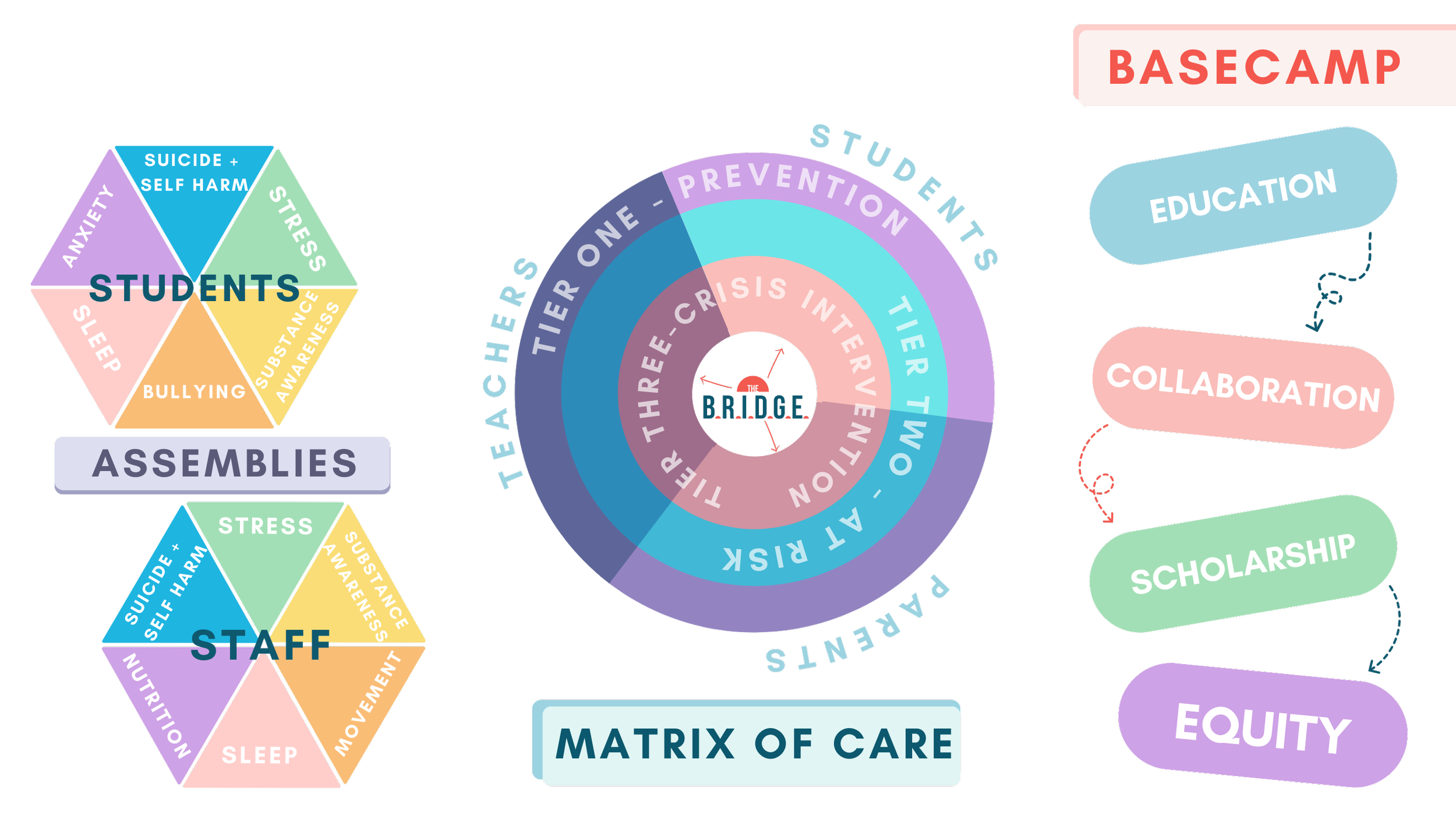
Help us provide equitable mental health care to communities in need.
2 out every 3 kids across America will experience at least one instance of childhood adversity. Your donation empowers our team of clinicians, educators, mentors, and advocates to provide life-changing mental health care to students, families, and educators in K-12 school communities.
Adversity is not a life sentence.
At the BRIDGE, we believe that every person has the inherent right to safety and education. We move students from where they are to where they are going. Learn how below!
We can help.
At The B.R.I.D.G.E. we engage with the systemic forces, including childhood adversity, that keep communities cycling through trauma. Through our three-part programming pathway, we co-create solutions with community. Our model creates collaboration across community stakeholders inclusive of K-12 schools, families, universities, local businesses, and philanthropists.
Systemic Challenges
Adverse Childhood Experiences also known as ACEs are experiences of abuse, neglect, or household dysfunction that happen during our youth. It is estimate that 2 out of 3 adults today have experienced at least one ACE. What do we know about adversity in childhood? If it is left un-mitigated, then a person with a high ACE score, 4+, is more likely to have many more mental, physical, social, and economical challenges. Why? Because ACEs are stressors that overwhelm a young person’s ability to cope. If we can help youth navigate these situations, and heal our own adversity as adults, we create resilient, healthy, and successful communities.
The School-to-Prison-Pipeline is a system that funnels students from the classroom to the courtroom. Like the judicial system, it disproportionately affects young people of color and those with low socioeconomic status. Of those caught in the SPP, 66% are diagnosed with emotional or trauma disorders, 45% have learning disabilities, 70% are diagnosed with drug dependencies, and 26% have attempted or considered suicide. But why does this system affect primarily disenfranchised youth? It is not by accident. Read our blog to diver deeper in these systems.
Partner Schools
If you currently work with The B.R.I.D.G.E., additional resources are located here.

In order to create sustainable change, we must address not only the tools we can teach young people, but also the environment that these young people exist in - not only the symptoms, but the root of the problem.
“If you want to go fast, go alone. If you want to go far, go together.”
Join the BRIDGE Community!
Sign up for our Newsletter to receive updates on the impact we’re making.






